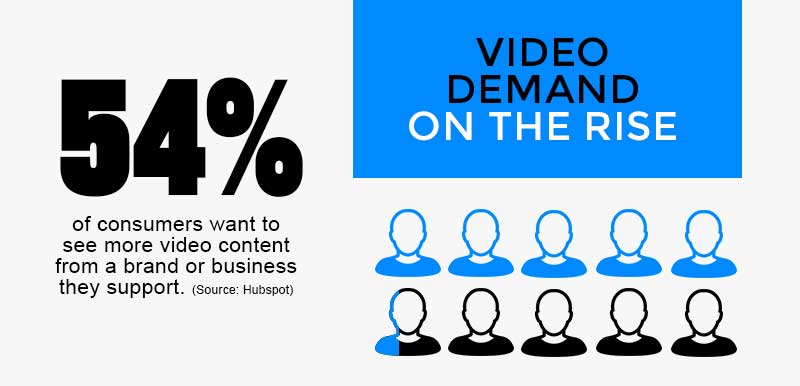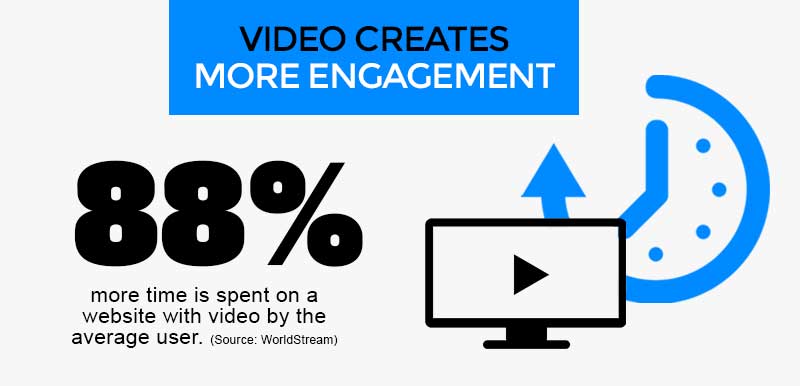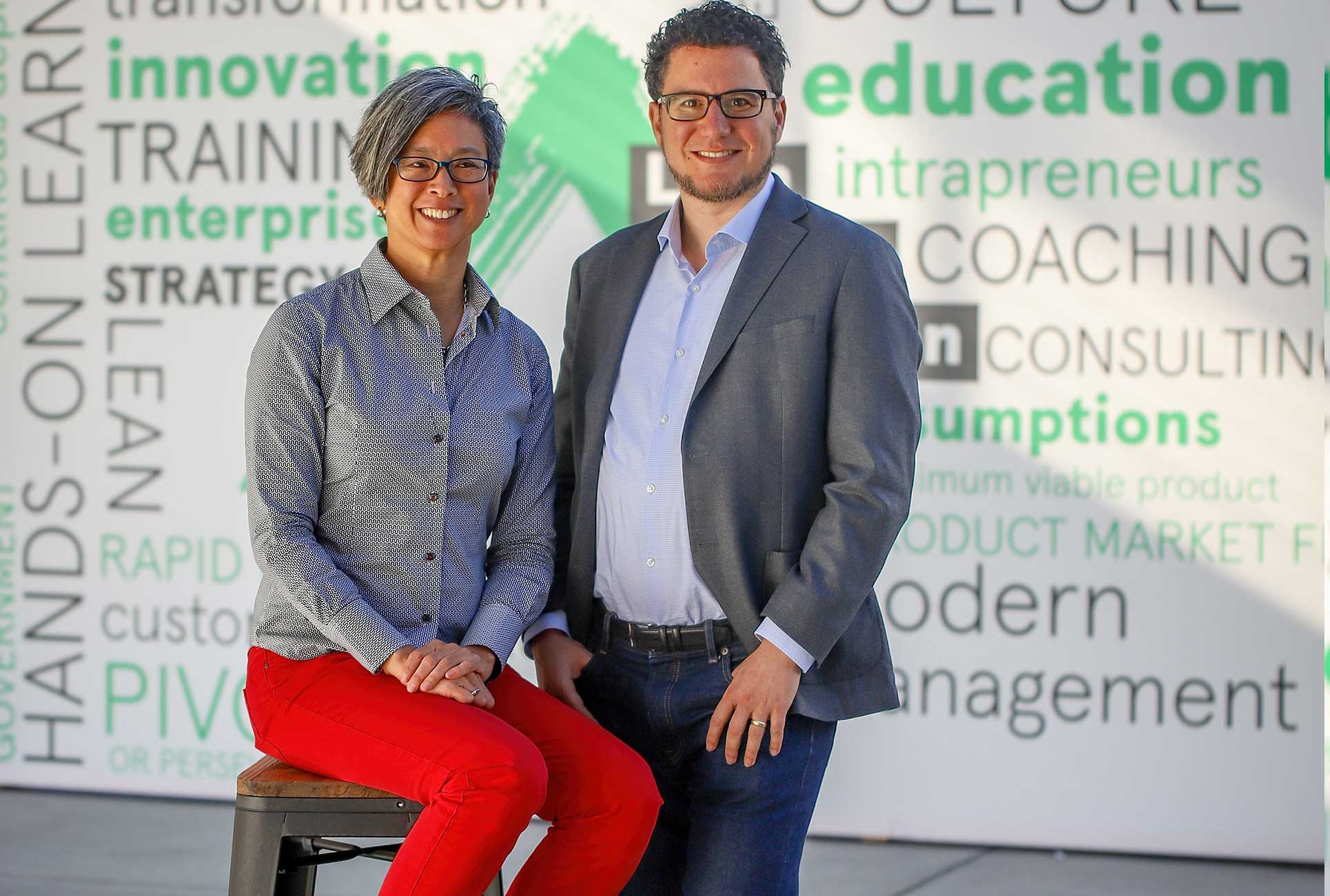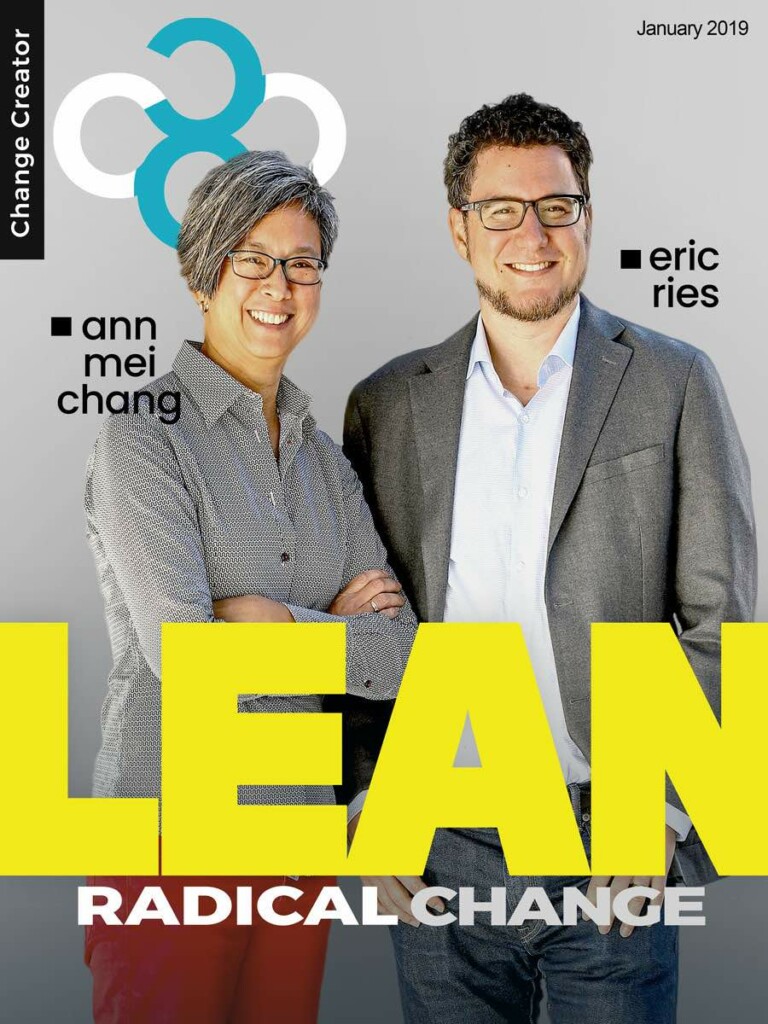200 million people now use ad blockers. If you haven’t noticed already, the wild, wild west days of digital marketing are gone. That’s why I created this short guide to help you figure out the 8 pillars of content you’ll need to start your marketing.
You can no longer expect one email to get you tons of leads.
Or think you can just create a landing page and get some sales.
Today’s companies have to do more than just pay for display ads, or invest in some Facebook campaigns. Customers have more choices online and want to buy from brands they know, love and trust.
But how do you create authentic, meaningful relationships with your customers in this digital space?
With compelling content and honest storytelling.
Why use content for your marketing?
I’ve been involved in content marketing and digital strategy exclusively for the past decade and I’ve seen a lot of changes in the past few years. When I started, not many small companies even had websites and if you did, you were ahead of the curve.
The way we use technology has dramatically changed in recent years, as has the access we have to brands. However, the way we make buying decisions has not. Today’s customer’s don’t make buying decisions with their ‘brains’ (as much as we’d like to believe we do), today’s consumers make buying decisions with their hearts.
Think about the last time you made a purchase online.
Did you know, love, and most importantly ‘trust’ that brand? Was it from a company that you’ve loved for awhile?
If you are struggling to compete with the larger brands online and find those customers that love what you do even more, then a great content marketing strategy is for you.
While content marketing costs 62% less than outbound marketing, it generates more than three times as many leads (Content Marketing Institute)
Don’t fret, my friends. While some of us live and breath digital content, creating powerful pieces of content marketing doesn’t have to be tough, or costly.
If you only do one thing with your content, make sure you do this: personalize it!
The more personalized and custom your content can be, the stronger bond you’ll grow with your customers. Content is essential to establishing that trust:
82% of consumers feel more positive about a company after reading custom content. (Demand Metric, 2014)
Creating custom content for your company doesn’t have to be overwhelming, but you might be asking, where do you start?
All business owners should have a content marketing strategy to make sure they get the most out of their content. Those who have a written content marketing strategy are more likely to find content marketing effective for their businesses, have less content-related stress thanks to knowing what they will do and when they’ll do it, and have a clear idea of what their ROI is. To put it simply, if you don’t have a content marketing strategy, you’re writing in the dark.
What holds most business owners back from writing a content marketing plan is feeling overwhelmed by the thought and not knowing how to go about it. Creating a strategy for your content marketing is not as complicated as it seems. Here are the necessary sections your plan needs to embody:
#1 Reasons for Creating Content
Your content marketing plan should include a short list of reasons why you’re creating content in the first place. It sounds simplistic but you’ll be surprised at how much power and focus you get from taking a few seconds to think about WHY you’re doing something. Whenever you feel low on motivation to work on content marketing, read your list of reasons why it’s so important to your business.
#2 Clarify Your Objectives for Content Marketing
After you know why you’re using content marketing, create a new section in your content marketing plan for objectives. Specifically, what do you want to accomplish with content marketing? Do you want greater brand awareness? More leads? Higher customer retention rates? The goals for your content marketing will determine the direction it takes.
#3 What Makes You Unique?
Also, write down what makes you unique. How will you be different from your competitors in your social media usage? This is similar to determining a unique selling point for your business. In fact, what makes you stand out in the social space may be the same as or close to what your unique selling point is.
#4 Which Platforms Will You Use?
A content marketing strategy should have a section that outlines which platforms you will use to spread your content. Include your objectives and plans for successful engagement for each platform. Because every social media site has its own culture and methods that work, you need to address that for each subsection. Your approach should be catered to each platform and clearly defined so that you can easily find your voice when marketing your content.
#5 Determine How You Will Measure Success
Next, you must write down how you will measure your content marketing success. Determine what metrics you will monitor and how you will collect the necessary data. The metrics you choose as indicators of your content marketing success will be based on your objectives. For example, if you want more leads, a metric to look at is clickthroughs. There are many social media analytics tools available, so research relevant tools and write down which you will use to monitor your content marketing progress.
#6 Target Audience Research
Another crucial section in your content marketing plan is the target audience. Provide a thorough explanation of who your target audience is, what they need, what their pain points are, where they can be found, etc. Writing down the most important information about your target audience will help you consistently deliver the right message with the right approach. A way to make this even easier is to create a persona, so that you’re talking to one person every time you market your content.
8 Pillars of Content for Your Marketing: Here’s Where to Start
That’s why I compiled this ‘starter guide’ for you here. These are the 8 pieces of content I think every social impact business needs to have to grow online and most importantly, to connect with those loyal fans, who will not only love what you do but will tell others about your company too.
1 – About Us Page
If someone wants to quickly get to know your brand, the first place they are going to go is your about us page.
There are many benefits to creating a compelling about us page but one of the main benefits is that people just want to buy from people that they know. If you are a newer brand and you’re trying to compete online with the bigger brands that everybody knows and the bigger stories that everyone knows you’re going to have to have an about us page that really speaks to the worldview and beliefs of your target audience. You are going to have to tell your story in a compelling way!
When we launched our signature program Captivate, we noticed that we suddenly started to get more views on our story page then we had previously. That’s because when people are making a buying decision they need to know more about you. If you’re About Us page doesn’t reflect your mission, beliefs, and values then you need to take a look at a refresh. Of course, it’s important to have your origin or founder story here as well.
You started your mission-driven business for a reason. Tell people why. Tell people about that moment that you knew you couldn’t do anything else but this business. Your customers want to know those details.
An effective About Us page:
-
Tells the story of why you started the business
-
Talks directly to your core customer
-
Shows the impact model and tells your impact story
-
Puts a human face to your business
-
Can also showcase your impact story, have visuals, videos that you don’t want to clutter your homepage
2 – Your Impact Story: Yes, It Matters!
While you might have taken the time to tell your impact story in your about us page, I wanted to highlight this story because it’s so vital to us social impact entrepreneurs, yet many of us really struggle to clarify exactly what our mission is.
Coming up with a mission statement is great. It’s always a great exercise to go through, but I want you to take a step back and consider your personal ‘why’ for starting your company.
Once you’ve tapped into that ‘why’ — the very reason you wake up in the morning, think about the people you serve.
That’s your impact story!
If you are not telling your impact story at every touchpoint online, you are missing out on so many opportunities to grow.
This year, Adam and I went to The Buy Good. Feel Good. Expo in Toronto, Ontario, Canada. It was a great event to meet our social impact ‘peeps’ and talk directly to the brands we’ve worked with and interviewed, like Christal Earle of Brave Soles.
When we first interviewed Christal, we were immediately drawn to her story, which she tells with such ease and authenticity. Her company started because she wanted to save her adopted daughter’s life in the Dominican Republic. While on a luxury vacation there many years ago, she woke up to the real poverty that she was surrounded by and knew she had to do something about it. That powerful narrative that Christal shares about her ‘why’ for starting Brave Soles is the reason why she’s grown this company so quickly.
When we met up with her in Toronto, she told me that she still gets a kick when people she’s never met before tell her story back to her! Think about that! Her customers and loyal fans are sharing her story with others. That’s the kind of marketing any of us want.
Telling your impact story doesn’t have to be complicated. Think about that personal ‘why’ — the reason you started your company in the first place. Start there. Tell that small part of your story first. See if others can remember that and share it too! The more you tell your story, the more you’ll see what resonates as well. How do you know you’re telling your story enough? You’ll feel like you’re becoming repetitive. That’s when you know you’ve hit that sweet spot.
3 – Videos
Demand for video content increases every day as we become more attached to our electronics. Brands that don’t get themselves out on video are missing out.
Whether you are creating videos for your homepage, to accompany a blog article, or to do some Facebook marketing, videos are a great way to tell your story and talk about your company.
If you haven’t noticed already, videos pop up first in the Google searches. This is not only because YouTube and Google are the same company, but because more of us use videos to make important decisions online, to learn more about a product, or even the impact the company has.
A high-quality video with some serious production value would be nice, but you don’t have to start there. If you are a new company, you can invest in a few key videos that really tell your founder and impact story and start from there.
Of course, video does include things such as Facebook live, which anyone can do. If you are building a community online, going live and sharing some valuable insights, stories, updates about your brand is great too.
4 – Social Media Posts That Speak Directly to Your Audience
A brand today cannot thrive without social media. Whether you want to dominate Instagram or take over Facebook, you are going to have to plan on creating some powerful social media posts that attract the right audience.
We still love our social media. Every minute of the day:
-
Snapchat users share 527,760 photos
-
More than 120 professionals join LinkedIn
-
Users watch 4,146,600 YouTube videos
-
456,000 tweets are sent on Twitter
-
Instagram users post 46,740 photos
That’s a lot of content creation!
If you want people to share something from your brand, you are going to have to get on social media and you are going to have to figure out those messages that speak directly to them.
Here at Change Creator, we’ve experimented with a lot of messages and memes on Facebook to see what truly resonates with our audience.
Currently, we’ve got a few memes that seem to connect really well with our audience, but we didn’t discover them by accident. For years, we’ve been talking to our audience. Interviewing people over Skype, asking people questions and tracking their responses. We also keep a close eye on who is liking our content, who signs up for our emails, who signs up for our masterclasses. We reach out and talk to as many people as we can, then we find common beliefs, values that thread these conversations.
From there, we can extract those messaging statements that speak directly to our core audience. Right now, you might have seen one of these messages, where we simply ask, “What kind of a difference do you want to make?”
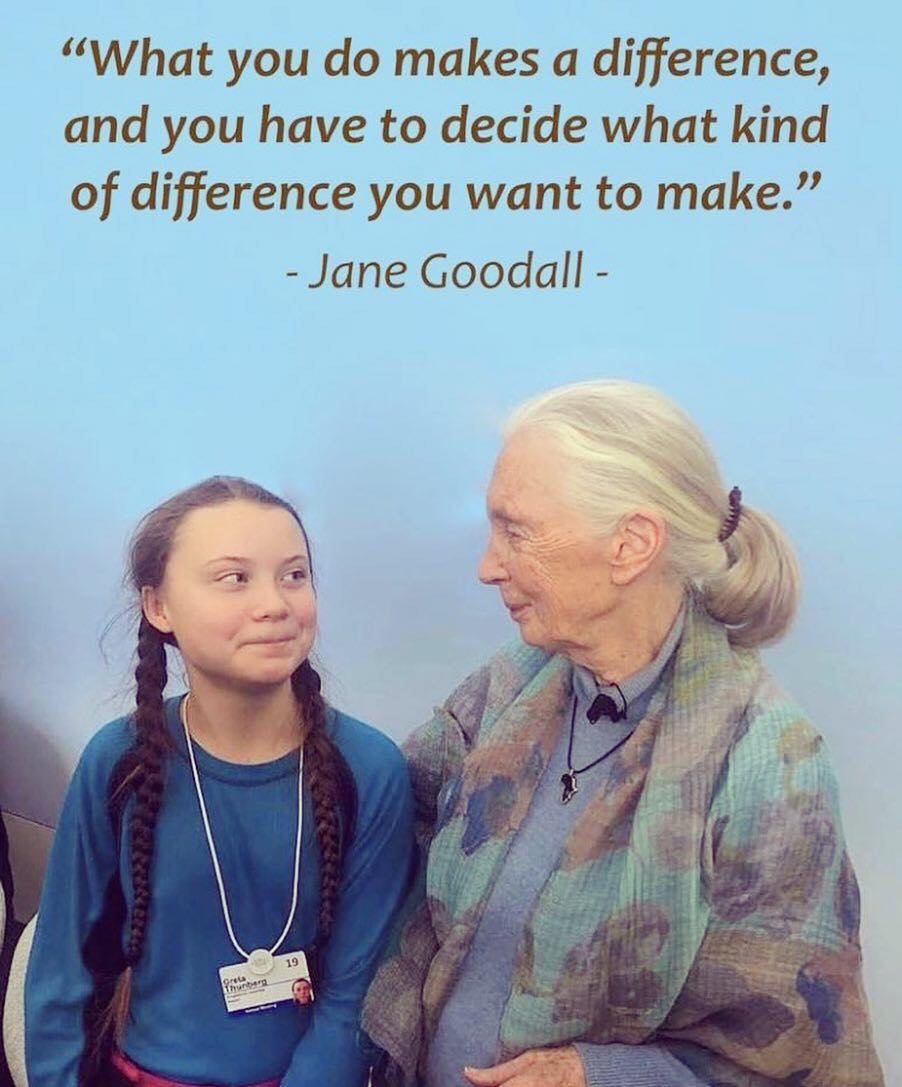
When creating pieces of content for your social media, you want to get inside your audience’s hearts and minds and share content that they’ll want to share as well. Memes, videos, testimonials… these are all great pieces of content to share and promote inside your social media channels.
5 – Get Out There: Be Featured on Others Interviews
People not only want to know your story, but they also want to get to know you, that’s why interviews are so great. As you grow your company, you also need to think about growing your authority online and interviews are an effective way to do that.
If you think that you can’t get featured on interviews, think again. Today, there are more and more niche podcasts out there that are always looking for experts like you. You have a story to share, business lessons to impart, an area of expertise too — you should share it.
While podcast interviews might not naturally come into your email inbox, there are some things that you can do to get featured on other podcasts right away:
-
Tell people you want to be interviewed (yes, this works!)
-
Use HARO (Help a Reporter Out) and answer relevant calls for experts
-
Create compelling content on niche topics
-
Have a ‘want to interview’ me call to action button on your about us page
Getting yourself out there means connecting not only with your audience but other experts in your space too. Immerse yourself in your ‘world’ online. Join Facebook groups that are relevant, ask questions, share your story. Show people that you are the expert and that they will want to know more. The more you can get your story out there, the more people will naturally want to know more!
6 – Failure Stories
I’ve included this valuable piece of content as one every social entrepreneur should consider using in their marketing. Why? Let me explain.
Gone are the days when we just loved brands because they were on television or in a billboard high above the city center. Today’s consumers are inundated with choices. We can either choose a brand that we know or we might discover a new brand — but not so fast. Before we choose to purchase from a new brand, we have to get to know them a little first.
Failure stories are the comfort food of content marketing because we as an audience can’t get enough. Readers have told me over and over again that they love the stories that we tell here at Change Creator, but they really respond to the ‘failure stories’, or stories from us or others that tell what it’s really like on the front lines of your business in the early days. We as audience members can’t get enough — this content is what builds authentic relationships with your audience.
Failure stories lead to breakthrough or transformation stories which everybody loves. A great example of failure stories and transformation stories is any kind of shows such as American Idol or The Voice. The contestants that seem to get the most airplay the most airtime are the ones that are willing to expose the tough times in their lives and the failures they’ve overcome. This draws us in as audience members into their story, and we root for them along the way as we witness their live transformations.
Your brand and your story can be as transformative as any three minutes segment on a reality show if you were willing to expose your ‘teachable’ moments and talk about the lessons that you’ve learned along the way.
One of the quickest ways to build authenticity into your content marketing is to be frank, honest and vulnerable and failure stories are a great way to get there. Failure stories lead to transformational lessons, so don’t be afraid to tell people the times you’ve learned the hard way.
7 – High-Quality Longform Guides
Curating valuable information is just as important to users today as creating new information. I have clients that make lots of money just helping people make better buying decisions and guides can be a great way to help your customers do that.
In the social impact space, there are so many ‘guides’ and how to articles that you can create to not only help your customers make smarter buying choices but you can also help push the narrative about the causes you champion.
Before you think about the guides you want to create, think about what you want your customers to know. Are you in the vegan fashion space? What about a guide to choosing alternative fabrics? Or a guide to where your clothes come from? There are so many ways you can help guide your consumers to a better purchase, showcase your impact model and build trust. Guides can also be great ‘free gifts’ to help build an email list too!
8 — Personalized Emails
For every $1 spent, email gives back a whopping $38 in ROI and offers the broadest reach (CampaignMonitor) which means if you haven’t already invested in an email strategy, now is the time that you should.
But investing in an email strategy doesn’t mean you have to grow your numbers to tens of thousands… you just have to make sure the right people go to your list. Before you even begin crafting emails, I want you to think about the types of ‘free offers’ you have to get people to that list and answer this question:
Are you giving people what you promised?
If you collect emails with a promise of ‘weekly updates’, then guess what? You better give them weekly updates.
If you collect emails with a promise of the latest news from your industry… you better be updating them on the latest news.
Whatever you promise your audience, make sure you can deliver.
That’s the first step in building that custom content that only you can offer. The next step is crafting those personalized emails that really speak to your customers.
Of course, you can personalize an email with someone’s name, but I want you to think beyond that. I want you to speak to your customers as they were your friends. How can you help them? What are their unique challenges? Fears?
Every person on your email list is a gift.
When crafting your emails, think about how you can help the person you are writing to. Tell stories. Make them smile. Anticipate their needs ahead of your own.
Does this sound like a relationship? Guess what? It is.
Your personal relationship with every member of your audience is important. Emails can be a great way to do that.
Ready to start creating some content? My Final Thoughts
Creating compelling content starts with you. With you sharing your story, talking about your impact and finding those people who will love you and share your story for you. I hope these 8 pillars of content serve you well as you grow your impact business, they sure have helped us a lot around here.
If you are struggling with your marketing, think about the content you are putting out into the world. There are a lot of choices out there. There are brands that are larger, more trusted by consumers but that doesn’t mean you can’t break through, because you can! Think about content that is evergreen, that will last forever so people will always be able to learn from you. Don’t ever underestimate the power strong, timeless content is for marketing.
Authentic content and storytelling is the fastest, most effective way to grow your business online. These 8 pieces of pillar content are a great place to start, so get crafting!
More amazing resources for you:




